Petrified Forest National Park: A Fossilized Wonderland
Discover Petrified Forest National Park, an ancient treasure situated in the northeastern region of Arizona, a mere 50 miles away from the New Mexico border. This incredible park, stretching along Interstate 40, showcases the unique beauty of petrified wood, stunning geological formations, and a rich cultural history that spans thousands of years. Whether you’re a nature enthusiast, history buff, or simply looking for an adventure off the beaten path, there is something for everyone to enjoy in this captivating destination.
Petrified Forest National Park offers an abundance of breathtaking beauty, rich history, and fascinating attractions that are truly one-of-a-kind. It is an absolute must-see if you find yourself traveling through the area.
Once you’ve entered Petrified Forest National Park, a wonderful way to kick off your adventure is to embark on a scenic drive along the park’s main road. Stretching an impressive 28 miles, this road offers an immersive experience with captivating views and convenient stops at various overlooks and viewpoints along the way. As you set out on your drive, it’s essential to prioritize safety and adhere to traffic laws. To ensure a harmonious experience for both visitors and the environment, it’s important to keep the following guidelines in mind.
Firstly, it’s crucial to stay on the paved roads throughout the park. By doing so, you contribute to the preservation of the park’s natural landscape and help protect its delicate ecosystems.
Secondly, be mindful of the posted speed limits, which range between 15 and 45 miles per hour. Adhering to these limits not only ensures the safety of yourself and others but also allows you to fully enjoy the stunning scenery at a comfortable pace.
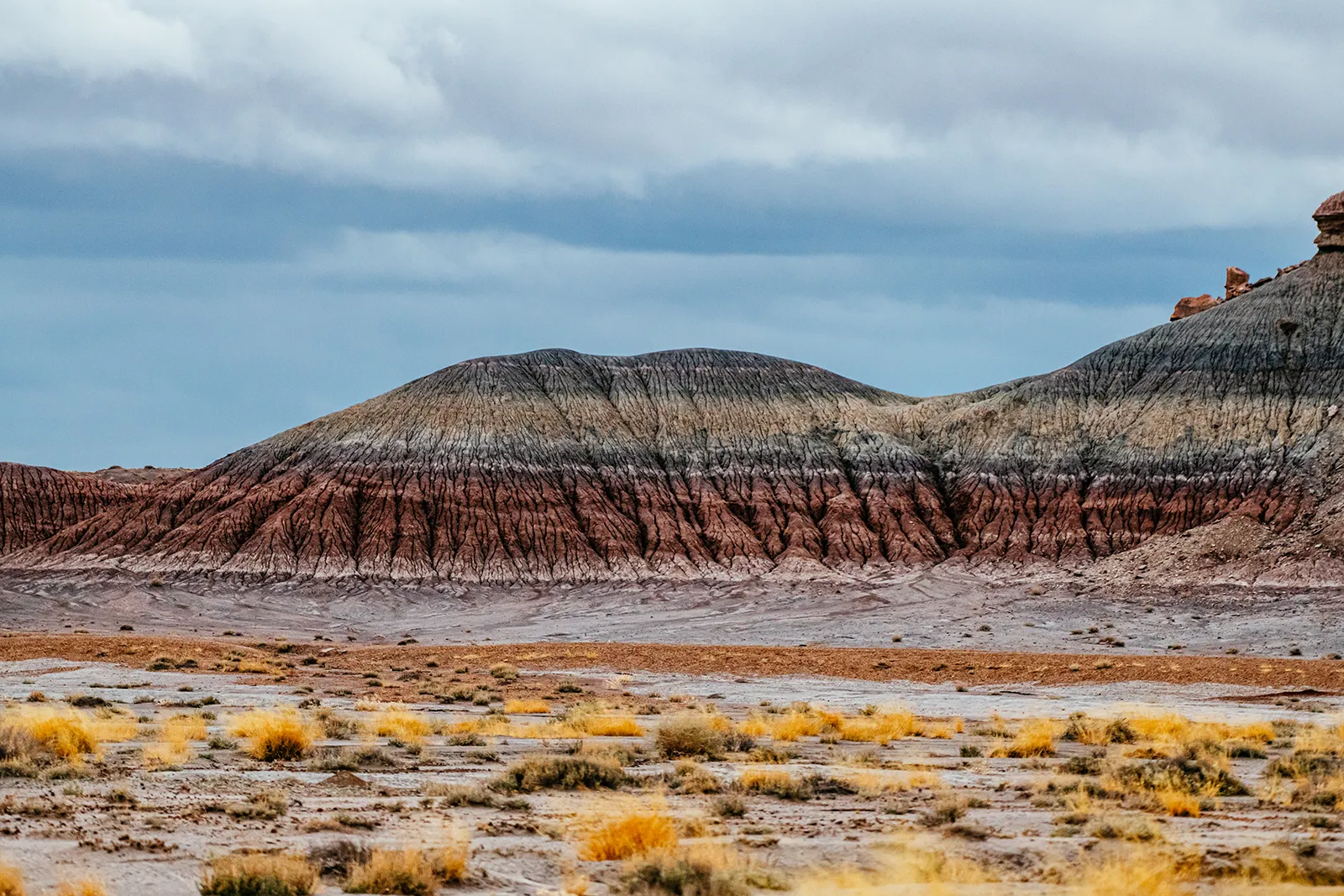
Additionally, when it comes to parking or stopping your vehicle, it’s imperative to do so only in designated areas. Avoid halting in the middle of the road, as it can impede traffic flow and pose hazards to both drivers and pedestrians.
Furthermore, to minimize environmental impact and conserve resources, it’s recommended to avoid idling your engine for extended periods. During inclement weather, limit engine idling to five minutes, and on regular occasions, keep it within two minutes.
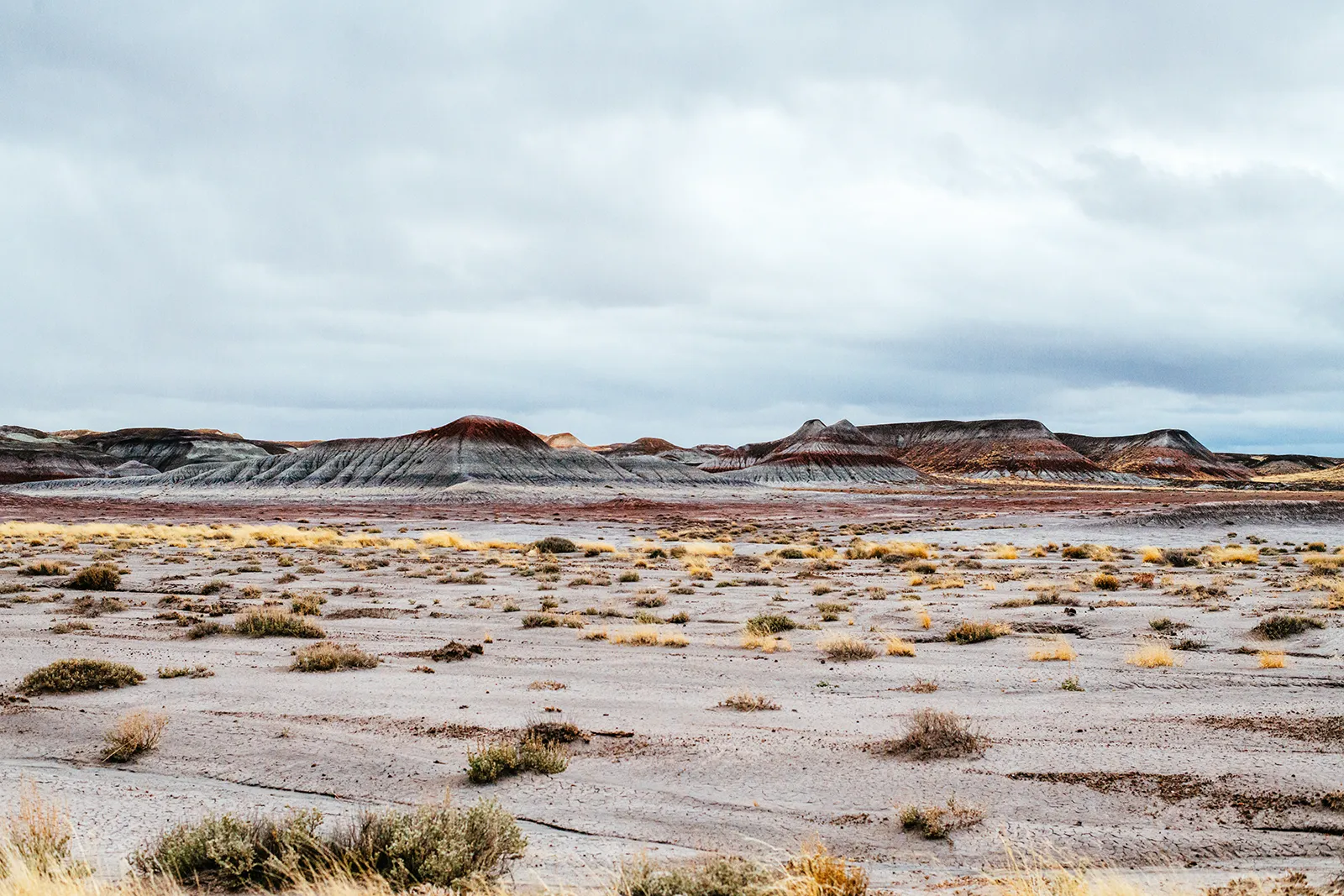
By following these straightforward guidelines, you actively contribute to the preservation of Petrified Forest National Park’s natural beauty and ensure that future generations can continue to enjoy its wonders. So buckle up, soak in the awe-inspiring sights, and embark on an unforgettable journey through this extraordinary park.
If you prefer exploring the park on two wheels, Petrified Forest offers opportunities for bicycling and e-biking. Bicycles and e-bikes are permitted on paved park roads, parking areas open to the public, and select designated areas. As you cycle through the park, keep in mind that everyone is captivated by the stunning views, so ensure your focus remains on the road to maintain safety.
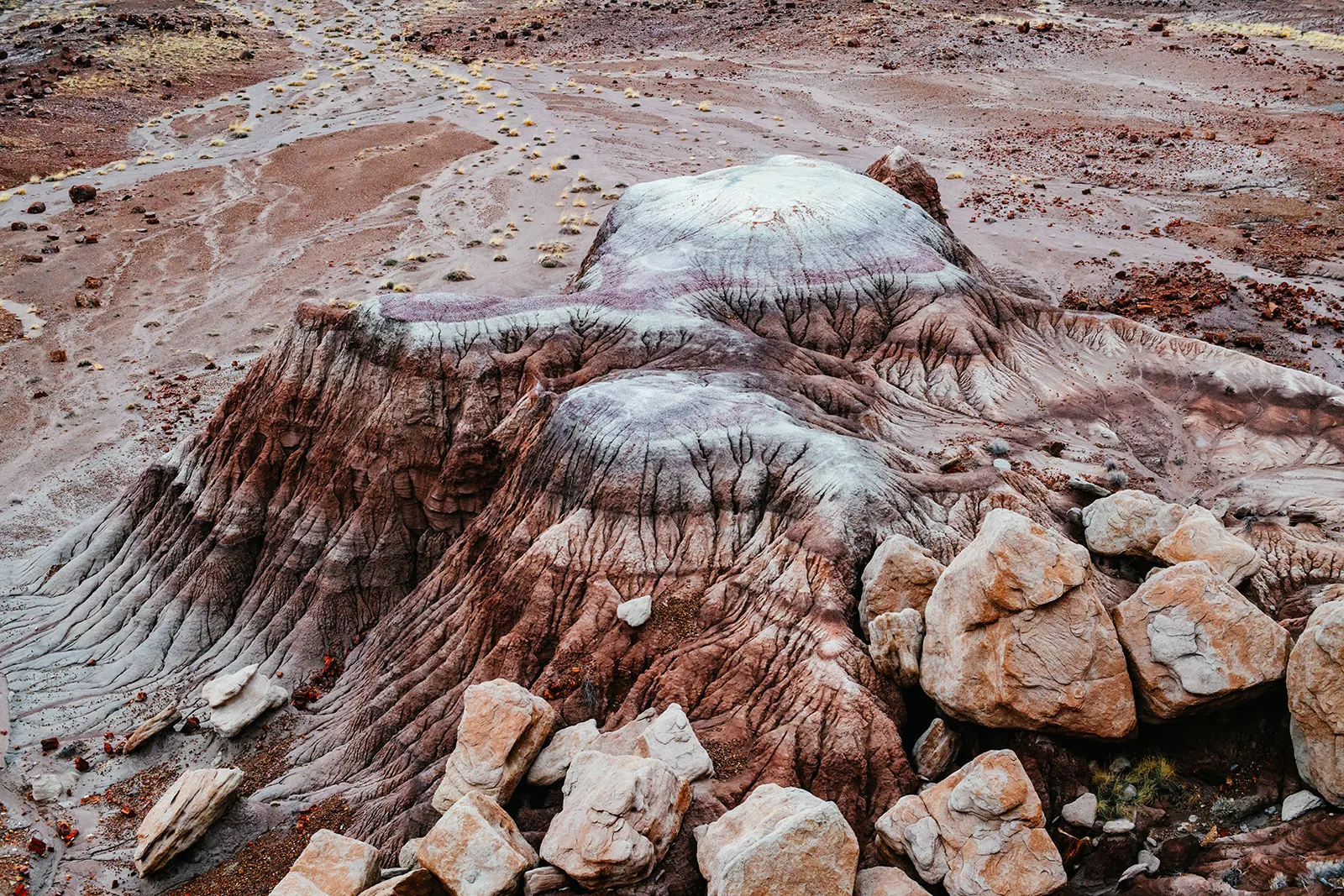
Geocaching and Earthcaching offer exciting and interactive ways to explore Petrified Forest National Park. Geocaching is a worldwide treasure hunt where participants use GPS-enabled devices to locate hidden containers, called geocaches, and share their experiences. The park features a variety of geocaches, including traditional caches that involve physical containers and Earthcaches that focus on unique geological features of the park. By participating in geocaching, visitors can not only enjoy the thrill of the hunt but also learn about the park’s natural wonders and geological processes.
Earthcaching, a specific type of geocaching, focuses on Earth science and educational experiences. Instead of physical containers, Earthcaches provide educational information and require participants to explore and learn about geological features at specific locations. Petrified Forest National Park offers several Earthcaches that allow visitors to understand the formation of petrified wood, the geological history of the area, and the processes that have shaped the landscape over millions of years. By engaging in Earthcaching, visitors can deepen their understanding of the park’s unique geological heritage and gain a greater appreciation for its natural wonders.
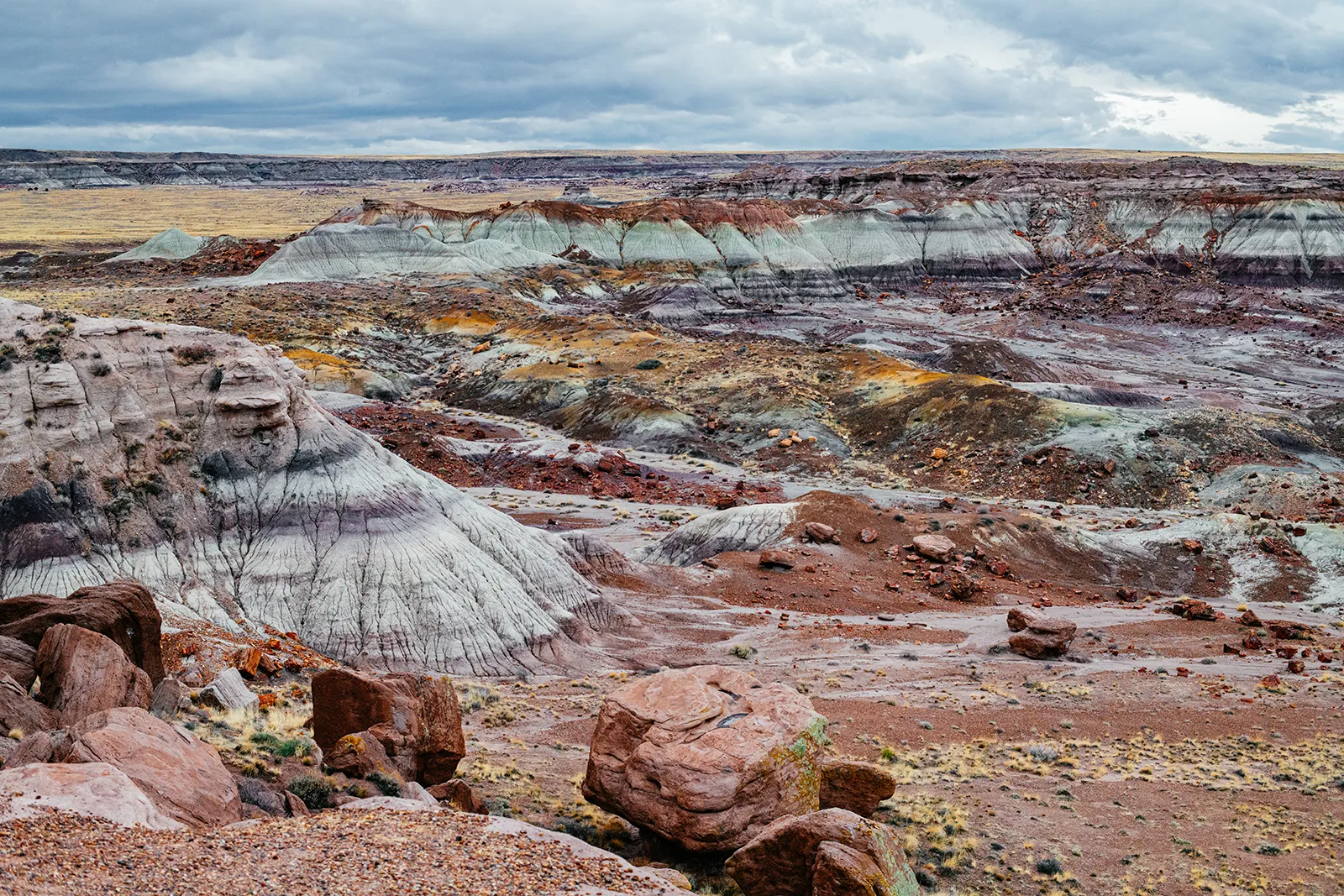
Both geocaching and Earthcaching provide engaging and interactive opportunities for visitors to explore and connect with the natural and geological aspects of Petrified Forest National Park. Whether searching for hidden treasures or learning about the park’s geological wonders, these activities offer a fun and educational experience for individuals and families alike. So grab your GPS device or smartphone, embark on a geocaching adventure, and unlock the secrets of this remarkable national park.
Horseback Riding in the Wilderness Area at Petrified Forest National Park
Embarking on a horseback ride in Petrified Forest National Park offers the flexibility to tailor your journey to your preferences, whether you have a few hours or a few days to spare. However, it’s important to be prepared and take certain precautions to ensure a safe and enjoyable experience. Before setting out, check the weather conditions to ensure they are suitable for riding. Familiarize yourself with the limits of both yourself and your horse, considering factors such as fitness level and riding experience.

To access the Wilderness Area, head two miles north of the Painted Desert Visitor Center to the Painted Desert Wilderness access trail near Kachina Point, on the northwest side of the Painted Desert Inn. Here, you’ll find trailer parking and designated areas for loading and unloading your horses. It’s essential to park your trailer in a manner that doesn’t impede vehicle traffic flow, ensuring a smooth and safe experience for everyone.
Trail conditions within the Wilderness Area can vary, and it’s important to be aware of them for your safety. The first section of switchbacks descends 400 feet on an unstable surface with steep drop-offs. Depending on your capabilities and comfort level, you may choose to lead your horse down this section. Once you reach the Painted Desert, the terrain features little grade change, offering a relatively easy ride.

It’s important to note that there are no maintained trails within the Wilderness Area. To minimize the impact on fragile microbiotic crusts and other delicate resources, it is recommended to travel in dry washes as much as possible. These areas provide a more resilient surface for horseback riding while protecting the sensitive ecosystem of the park.
During the summer months, monsoon rains can cause washes to flood, making access to certain parts of the Wilderness Area challenging. When the clay soils become wet, they can become slick and easily accumulate on your feet, posing potential hazards. Additionally, quicksand may be present in some washes. Therefore, it’s crucial to exercise caution and avoid traversing areas that appear hazardous due to flooding or unstable ground.
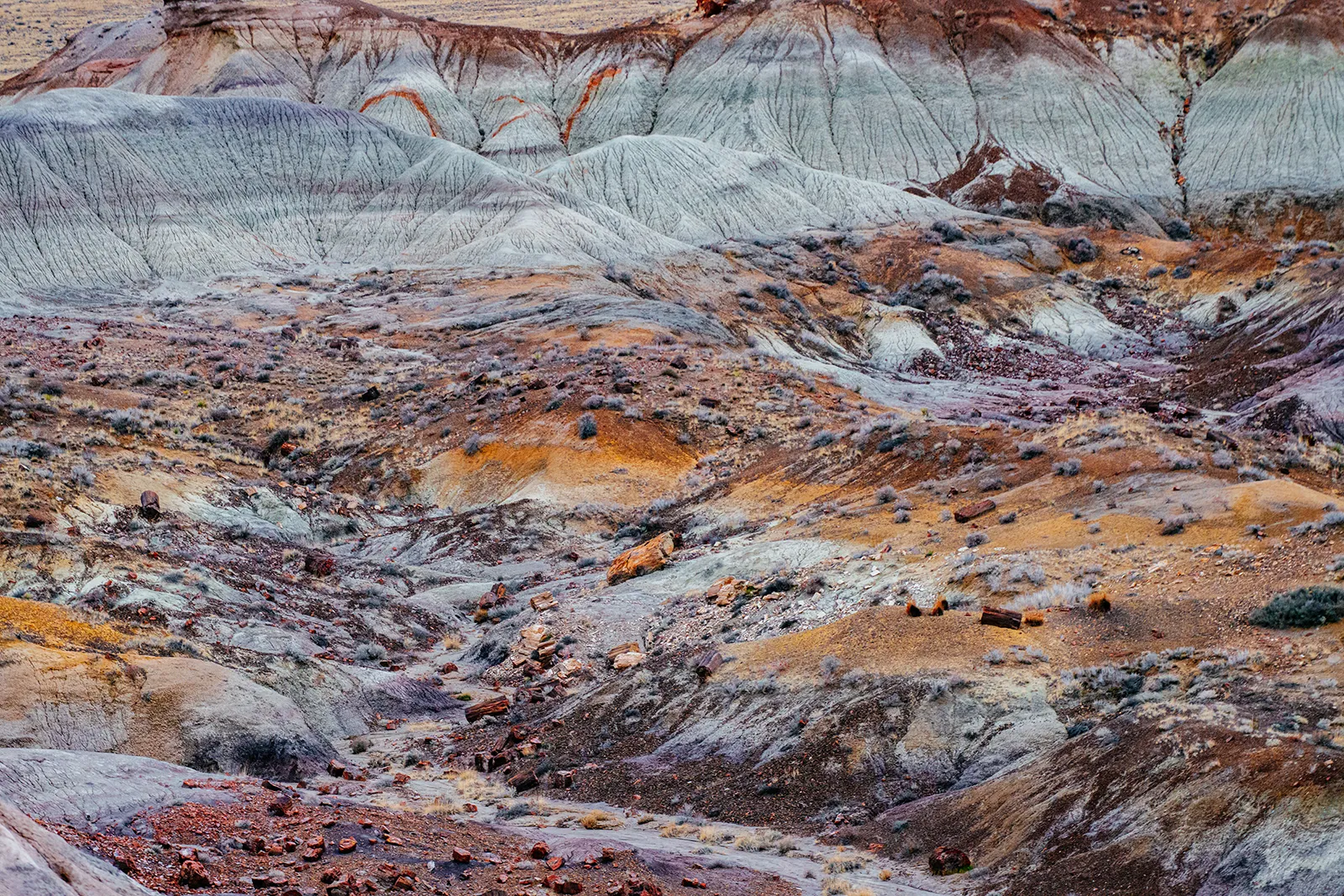
As there is no water available within the Wilderness Area, it is essential to pack in all the water you and your horses will need for your trip. Hydration is key to ensure the well-being and comfort of both you and your equine companions. Be sure to plan accordingly and carry an ample supply of water to sustain yourselves throughout your horseback riding adventure.
By being well-prepared, checking trail conditions, and carrying sufficient water, you can fully enjoy the beauty and tranquility of Petrified Forest National Park while exploring its Wilderness Area on horseback. Take in the breathtaking vistas, savor the connection with nature, and create unforgettable memories as you ride through this remarkable landscape of petrified wonders.
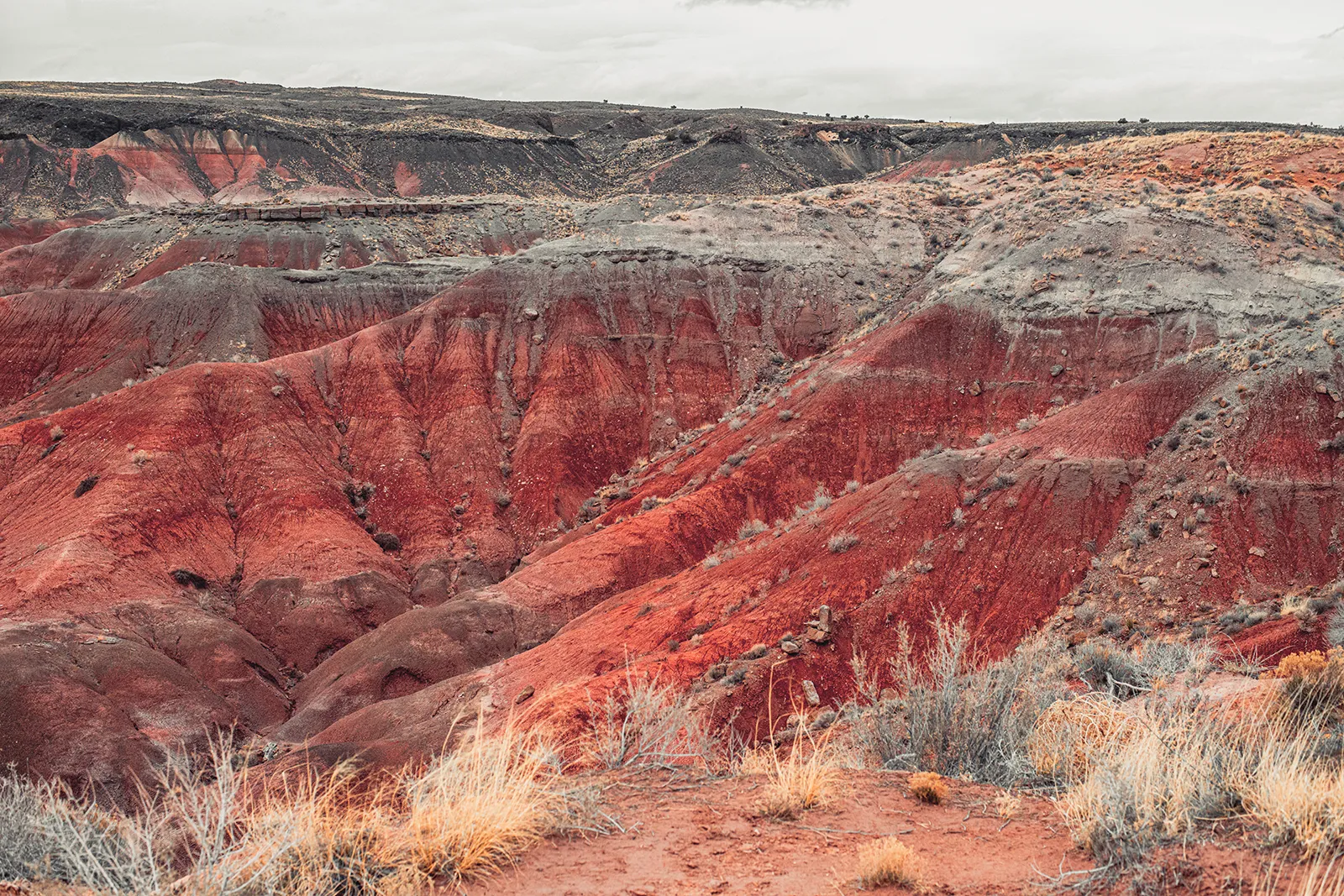
Animals and Wildlife at Petrified Forest National Park
Bringing your furry, feathered, or scaled friend along to Petrified Forest National Park can add an extra layer of joy and companionship to your outdoor adventure. Whether you have a loyal canine companion or a cherished pet of another kind, the park welcomes well-behaved pets to explore its wonders by your side. Just remember to be a responsible pet owner and adhere to a few guidelines to ensure a safe and enjoyable experience for everyone. When visiting the park, always keep your pet on a leash no longer than six feet in length to ensure the safety and comfort of all visitors. Respect the wildlife and keep your dog at a respectful distance from any animals you may encounter, allowing them to enjoy their natural habitat undisturbed.
Additionally, be mindful of the park’s regulations and know where your pet is allowed to go. While pets are welcome on paved roads and designated trails, they are not permitted in park buildings except for service animals. Lastly, remember to clean up after your pet and properly dispose of their waste in designated trash containers to help keep the park clean and preserve its natural beauty. So, if you’re planning a trip to Petrified Forest National Park, consider bringing your beloved pet along and embark on an adventure together amidst the ancient wonders and breathtaking landscapes.
Petrified Forest National Park is home to a diverse array of animals, birds, and plants, each contributing to the park’s unique ecosystem. As you explore the park, keep an eye out for the fascinating wildlife that call this area their home. Mammals such as mule deer, pronghorn, coyotes, bobcats, and jackrabbits can often be spotted in the grasslands and desert areas. Look to the skies, and you may see majestic raptors like golden eagles, red-tailed hawks, and prairie falcons soaring overhead. Smaller bird species like Gambel’s quail, roadrunners, and various songbirds add their melodious tunes to the park’s soundscape.
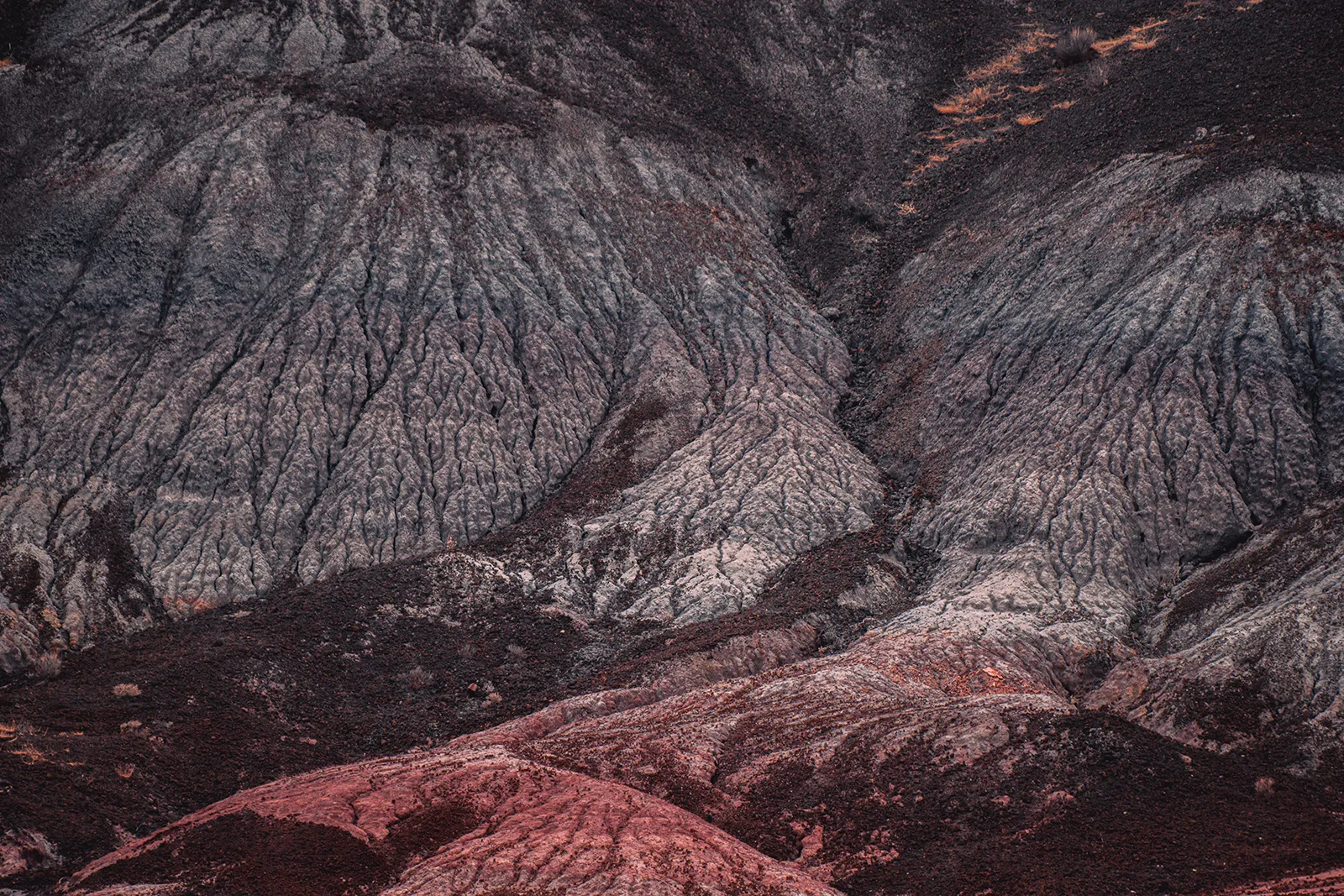
Petrified Forest National Park is renowned for its unique plant life as well. Desert shrubs and cacti such as creosote bush, prickly pear, and yucca dot the landscape, adapting to the arid conditions. Juniper and piñon pine trees can be found in the higher elevations, adding a touch of greenery to the surroundings. One of the park’s standout features is the colorful badlands known as the Painted Desert, where vibrant bands of sedimentary rock create a breathtaking display of natural beauty.
As you explore Petrified Forest National Park, take the time to appreciate the remarkable wildlife, birds, and plants that contribute to the park’s rich biodiversity. Whether it’s the sight of a graceful deer, the sound of birdsong filling the air, or the vibrant colors of the desert flora, these natural treasures make the park a truly special place to visit.
The Wonders of Petrified Forest National Park
For those who crave a deeper understanding of the park’s natural and cultural wonders, participating in guided activities is highly recommended. Join a ranger-led program or engage with experts, scientists, cultural demonstrators, or reenactors who provide valuable insights into the park’s history, geology, and cultural significance. The Petrified Forest Field Institute offers guided tours and field classes led by world-class guides and experts, allowing you to delve deeper into specific subjects of interest.
Additionally, the Artist-in-Residence program invites selected artists to live and work within the park, sharing their unique perspectives and creations with visitors. Witnessing the fusion of art and nature in this setting is a truly enriching experience.
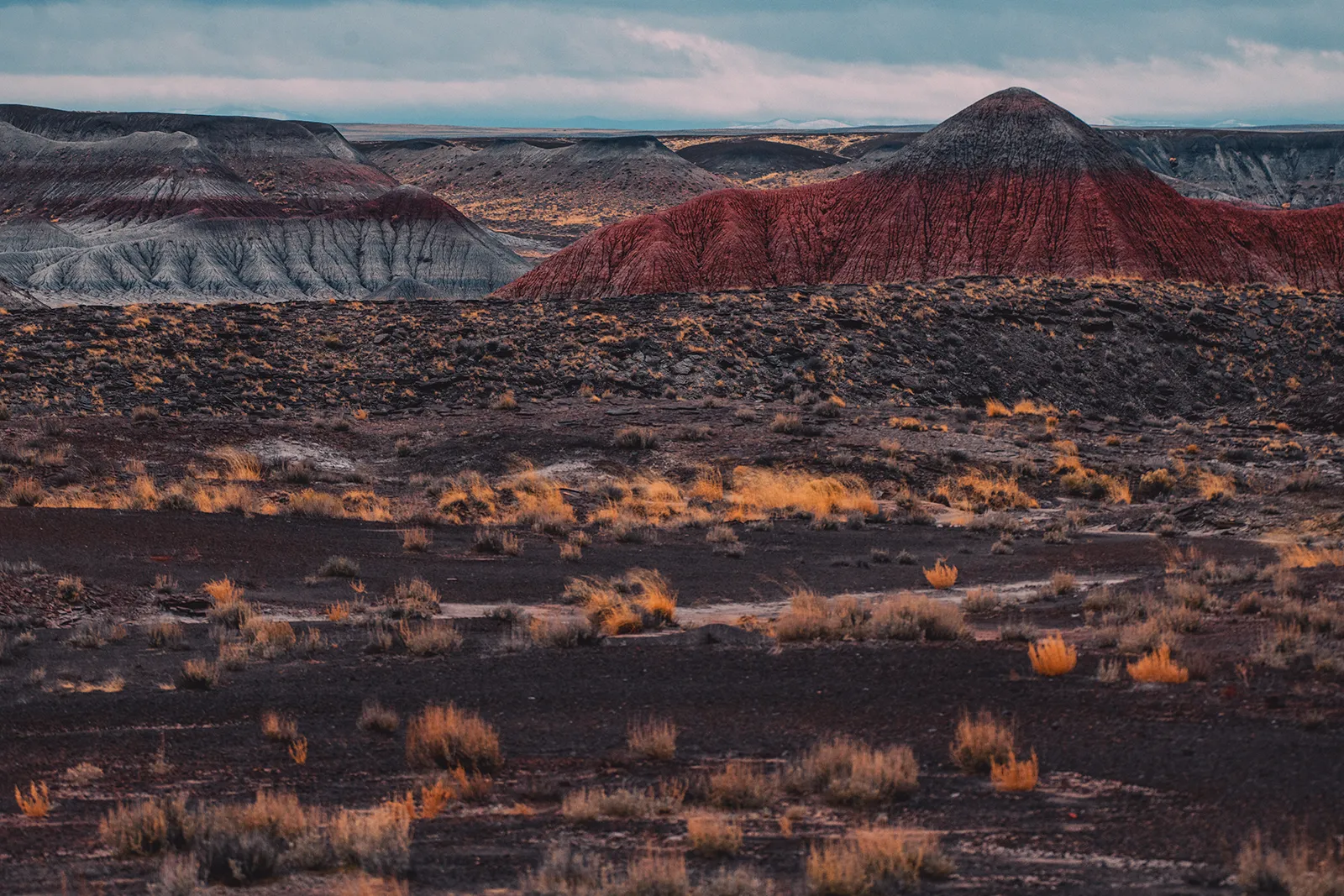
To enhance your visit and gain a comprehensive understanding of Petrified Forest National Park, make sure to stop by the visitor centers and exhibits located within the park.
The Painted Desert Visitor Center, situated at exit #311 off of I-40, is open year-round. This center serves as a hub for visitor information, orientation, and backcountry permits. It also features a bookstore, exhibits, a restaurant, a short loop walking trail, and even a museum demonstration lab where you can observe paleontologists preparing fossils. The visitor center offers a range of amenities, including a gift shop, gas station, picnic pavilion, public restrooms, and a postal drop box.
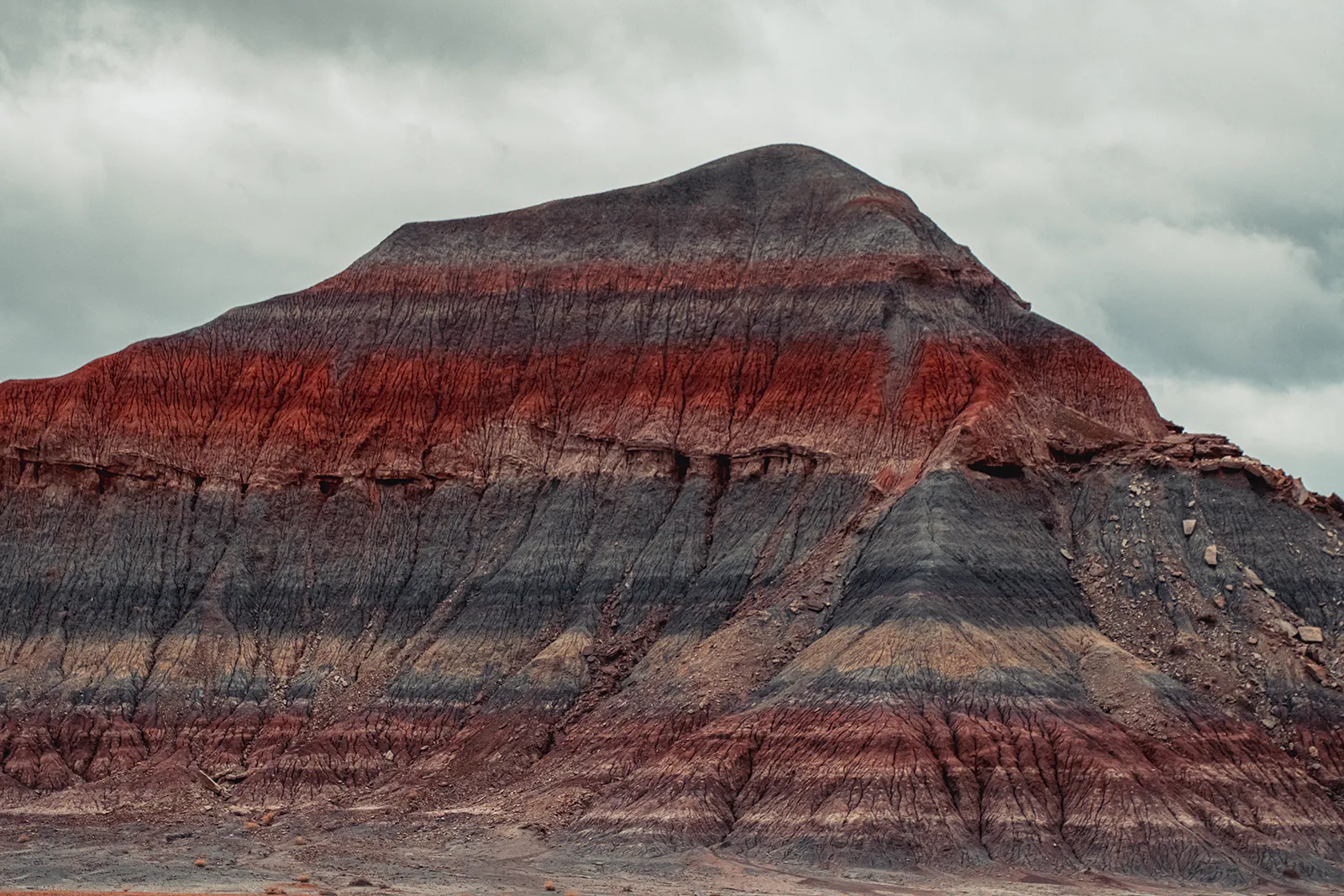
Another notable site is the Painted Desert Inn National Historic Landmark, located at Kachina Point, just 2 miles from the north entrance at exit #311 off of I-40. The inn has a rich history, originally built in the 1920s and serving as a trading post and rest stop for travelers along Route 66. Today, it operates as a museum, showcasing exhibits on the cultural and natural history of the area. The inn offers an intriguing glimpse into the past and serves as a reminder of the changing landscape and its significance.
The Rainbow Forest Museum, located near the south entrance, is another essential stop during your visit. Here, you’ll find exhibits that introduce the park’s geology, paleontology, and human history. Discover fascinating fossils, learn about the park’s ancient inhabitants, and marvel at the beauty of petrified wood up close. The museum is also home to the Giant Logs Trail, where you can walk amidst some of the largest and most visually stunning petrified wood specimens in the park.

Each visitor center and museum within Petrified Forest National Park provides a unique perspective and offers valuable insights into the park’s rich natural and cultural heritage. Take the time to explore these centers and engage with the exhibits, as they add depth and context to your visit.
As you traverse Petrified Forest National Park, you’ll undoubtedly be captivated by the incredible petrified wood that has earned this place its name and fame. It’s important to note that collecting petrified wood, fossils, or any other natural or cultural objects within the park boundaries is strictly prohibited. This is to preserve the park’s natural resources and cultural heritage for future generations.
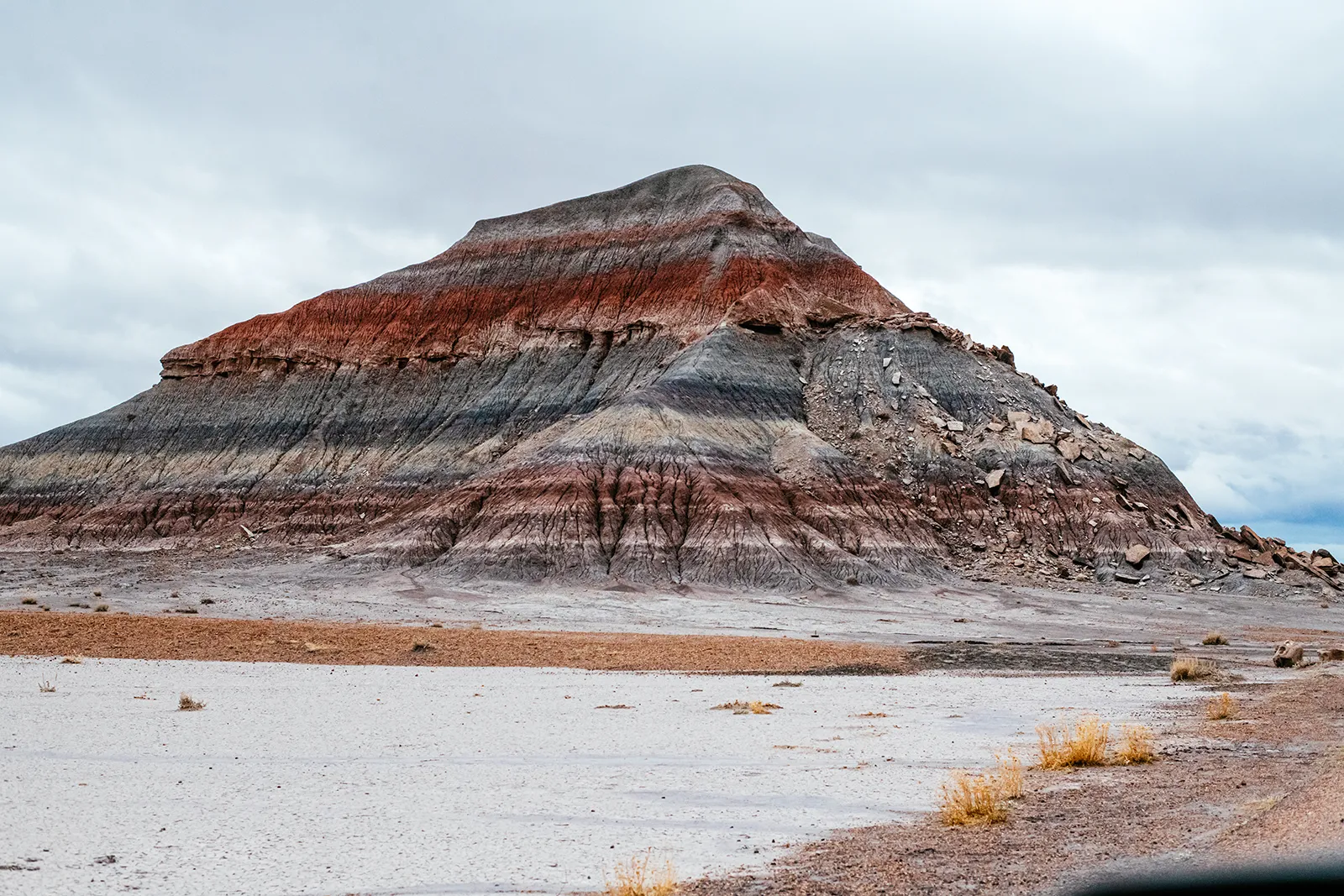
Appreciate the beauty of the petrified wood, but leave it undisturbed for others to marvel at. By practicing responsible stewardship and respecting the park’s rules, you play a vital role in preserving this precious ecosystem.
Petrified Forest National Park: Why Visit?
The star of the show at Petrified Forest National Park is undoubtedly the mesmerizing petrified wood. Here, ancient trees have been transformed into stone over millions of years through a fascinating process called petrification. As you wander through the park, you’ll encounter large, colorful logs that seem frozen in time, with their vibrant mineralized hues and intricate patterns.
Petrified wood is a fascinating natural phenomenon that can be found in abundance at Petrified Forest National Park. It is the result of a process called fossilization, which occurs over millions of years. Petrification begins when fallen trees are buried under layers of sediment, such as volcanic ash or river deposits, cutting off their exposure to oxygen and slowing down the decay process. As the buried wood remains in this oxygen-deprived environment, it undergoes a transformative journey.

Over time, groundwater rich in minerals seeps through the sediment and permeates the porous wood. These minerals, such as silica, calcium, and iron, slowly replace the organic material of the wood cell by cell through a process known as mineralization. As the minerals gradually replace the wood, they crystallize, preserving the intricate structure of the original tree.
The replacement process is incredibly precise, often resulting in exquisite detail. The minerals replicate the wood’s cellular structure, capturing its annual growth rings, bark patterns, and even the smallest vessels and fibers. The result is a unique and visually stunning piece of petrified wood that showcases the original tree’s colors and textures, often with vibrant hues of red, orange, yellow, and blue. The brilliant colors are a result of the presence of different mineral impurities within the water that penetrated the wood.
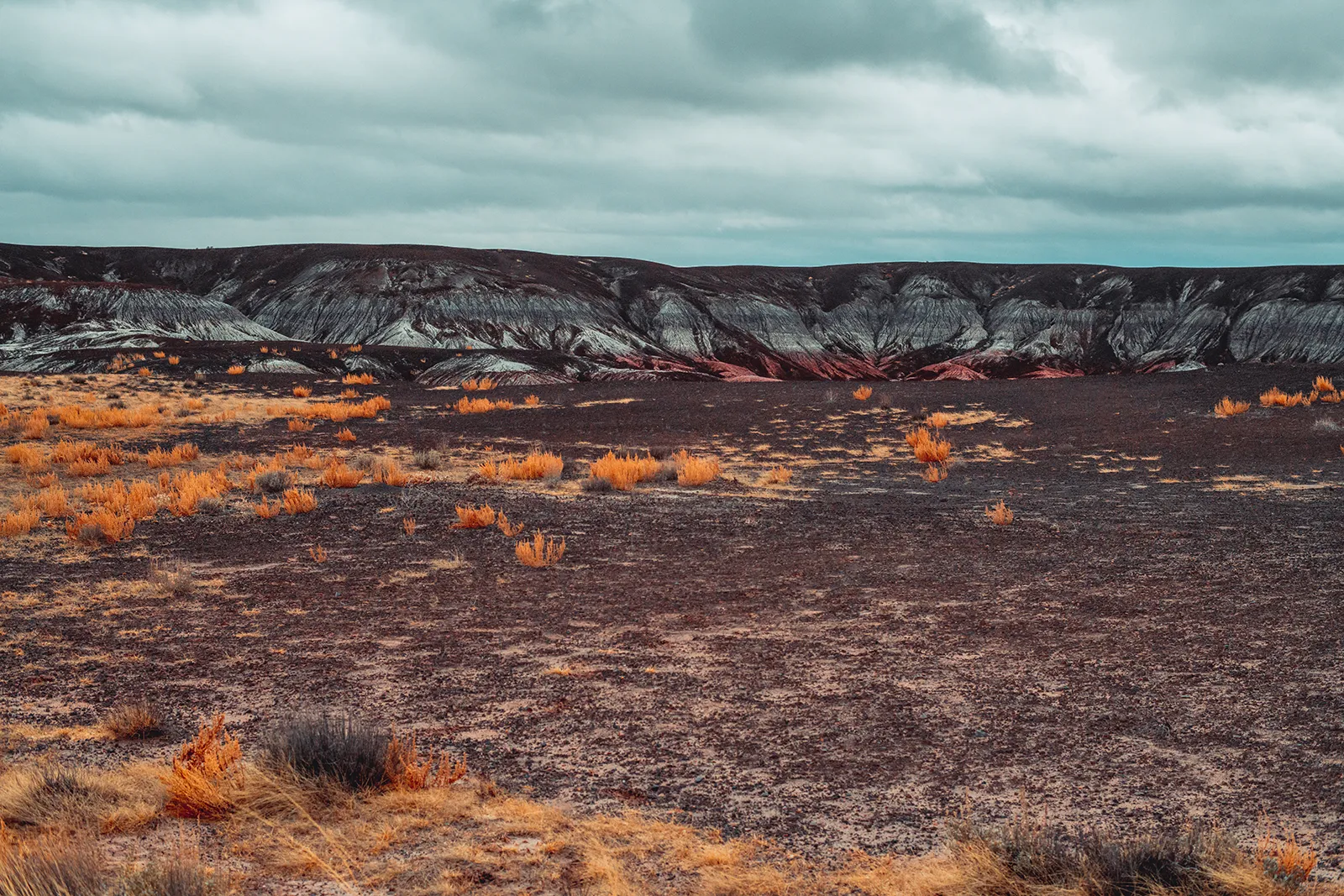
Petrified wood can vary in size, from small fragments to massive logs that span several feet in diameter. These preserved ancient trees provide scientists with valuable insights into past ecosystems, offering clues about the flora and climate of the time when the trees were alive. Studying the petrified wood found in Petrified Forest National Park allows researchers to unravel the mysteries of our planet’s geological history and understand the changes that have occurred over millions of years.
While the petrified wood steals the spotlight, the park’s geological formations are equally awe-inspiring. The Painted Desert, with its vast expanse of layered sedimentary rocks displaying a breathtaking array of colors, showcases the ever-changing landscape over millions of years. From soft pastels to vibrant reds, oranges, and purples, the Painted Desert is a living canvas that reveals the Earth’s tumultuous past.
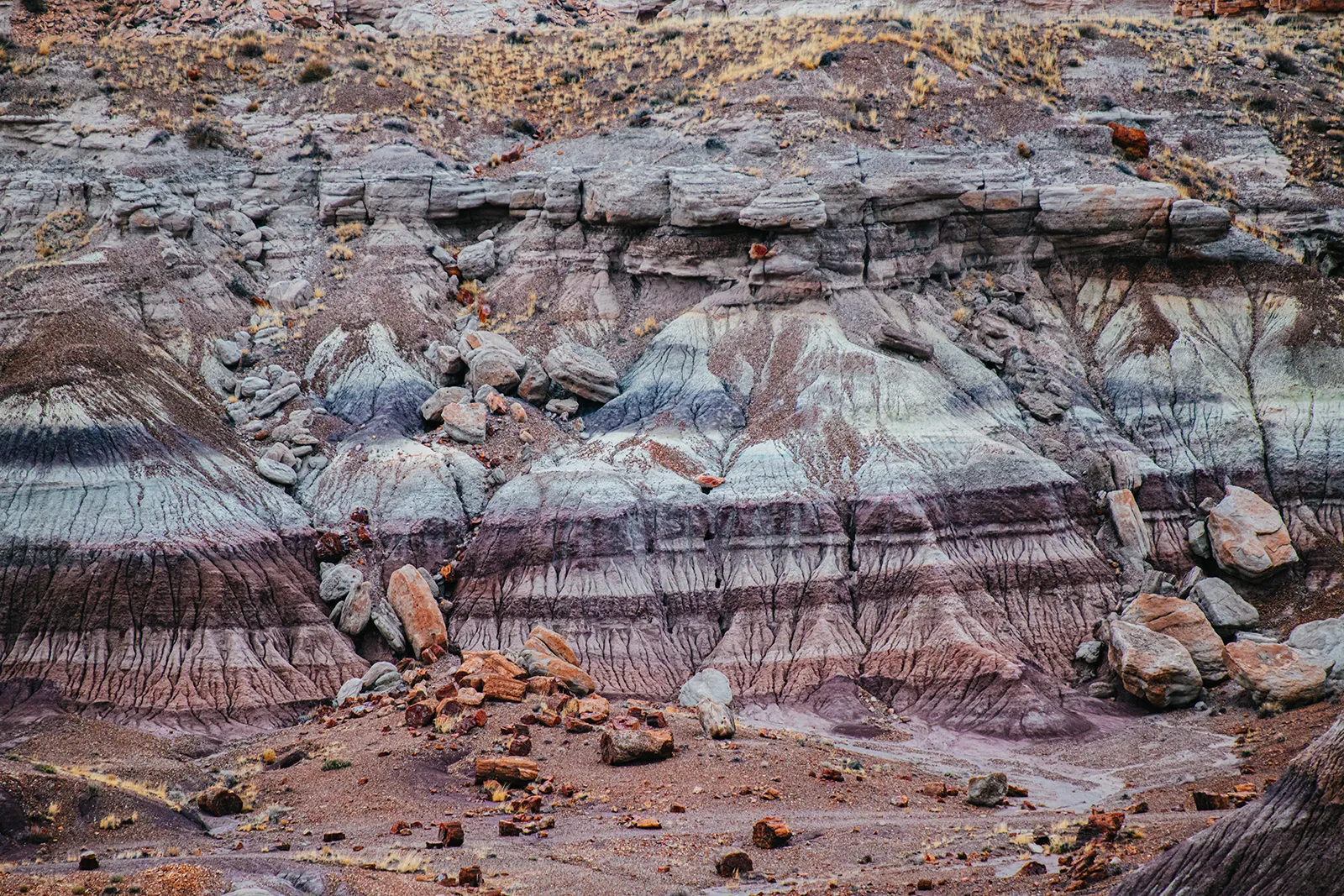
Petrified Forest National Park is not only a geological wonderland but also a place rich in cultural history and archaeological significance. The park preserves over 13,000 years of human history, with evidence of indigenous cultures that once thrived in this region.
For thousands of years, various Indigenous peoples have called this region home and have left behind a legacy of their presence and contributions to the land.

The park sits within the traditional lands of several Native American tribes, including the Hopi, Navajo, Zuni, Apache, and other Puebloan groups. These tribes have deep ancestral ties to the area and have maintained a strong connection to the land and its resources throughout history.
The Indigenous peoples who lived in and around Petrified Forest National Park were skilled and adaptable, relying on the diverse natural resources available to them. They were hunter-gatherers, cultivating a deep knowledge of the land and its seasons. The desert environment provided them with sustenance in the form of game, such as deer and rabbits, as well as edible plants and seeds.
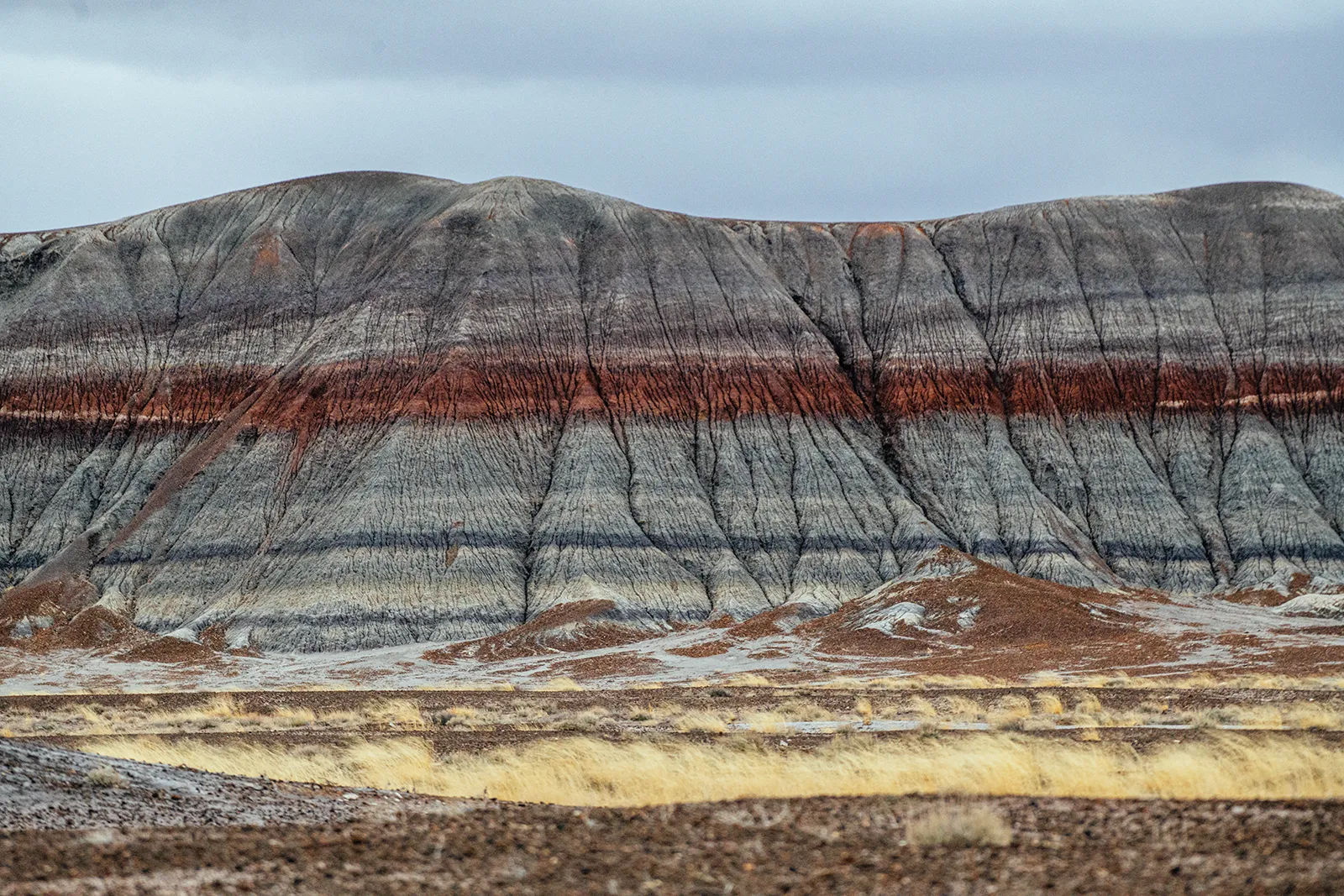
The presence of ancestral Puebloan communities can be seen in the park through the remains of ancient villages and petroglyphs (rock carvings). Puerco Pueblo, located within the park, is a remarkable example of a 100-room pueblo that was occupied over 600 years ago. This site provides a glimpse into the daily lives and cultural practices of the ancestral Puebloan people who once thrived in the area.
The Indigenous peoples’ relationship with the petrified wood found in the park was one of reverence and significance. They recognized the unique qualities of the petrified wood and used it in various ways. Some pieces of petrified wood were incorporated into tools, such as arrowheads and scrapers, while others were used for artistic and ceremonial purposes. The tribes had deep respect for the land and its resources, and the petrified wood held cultural and spiritual significance for them.
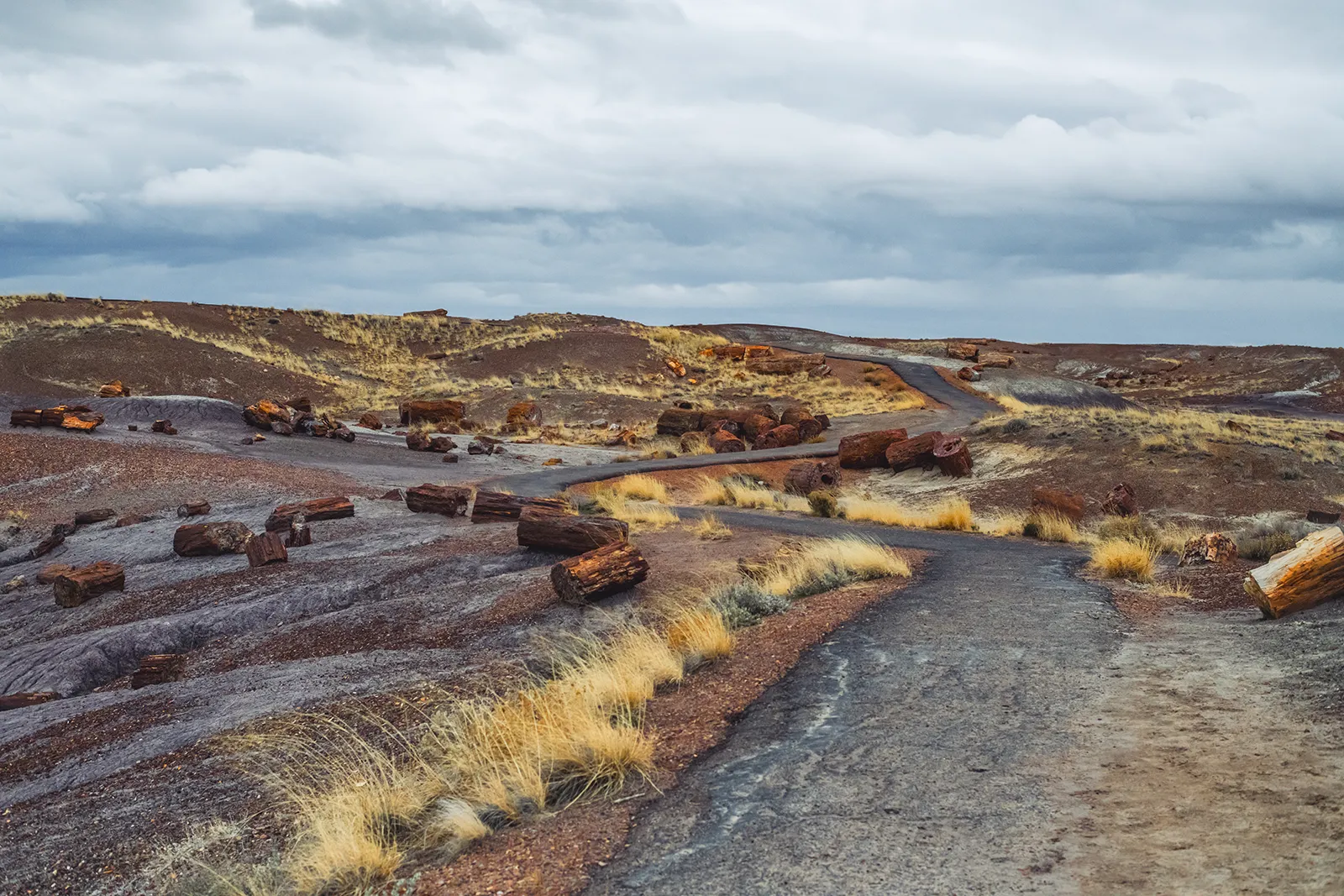
Today, the cultural legacy of the Indigenous peoples who lived around Petrified Forest National Park continues to be celebrated and honored. The park collaborates with tribal communities to preserve and interpret their cultural heritage, offering visitors opportunities to learn about the traditional knowledge, customs, and stories of the Indigenous peoples who have lived in this region for generations.
As you explore Petrified Forest National Park, take a moment to reflect on the enduring presence and contributions of the Indigenous peoples who have shaped the land’s history and culture. Their deep connection to the land serves as a reminder of the importance of preserving and respecting both the natural and cultural heritage of this remarkable area.

Petrified Forest National Park stands as a testament to the importance of conservation and preservation efforts. The park’s establishment in 1962 and subsequent expansions demonstrate a commitment to protecting and sharing the unique resources found within its boundaries.
As a visitor, you have a role to play in preserving the park’s natural beauty and cultural heritage. By following Leave No Trace principles, respecting park regulations, and being mindful of your impact, you contribute to the ongoing preservation of this extraordinary place.
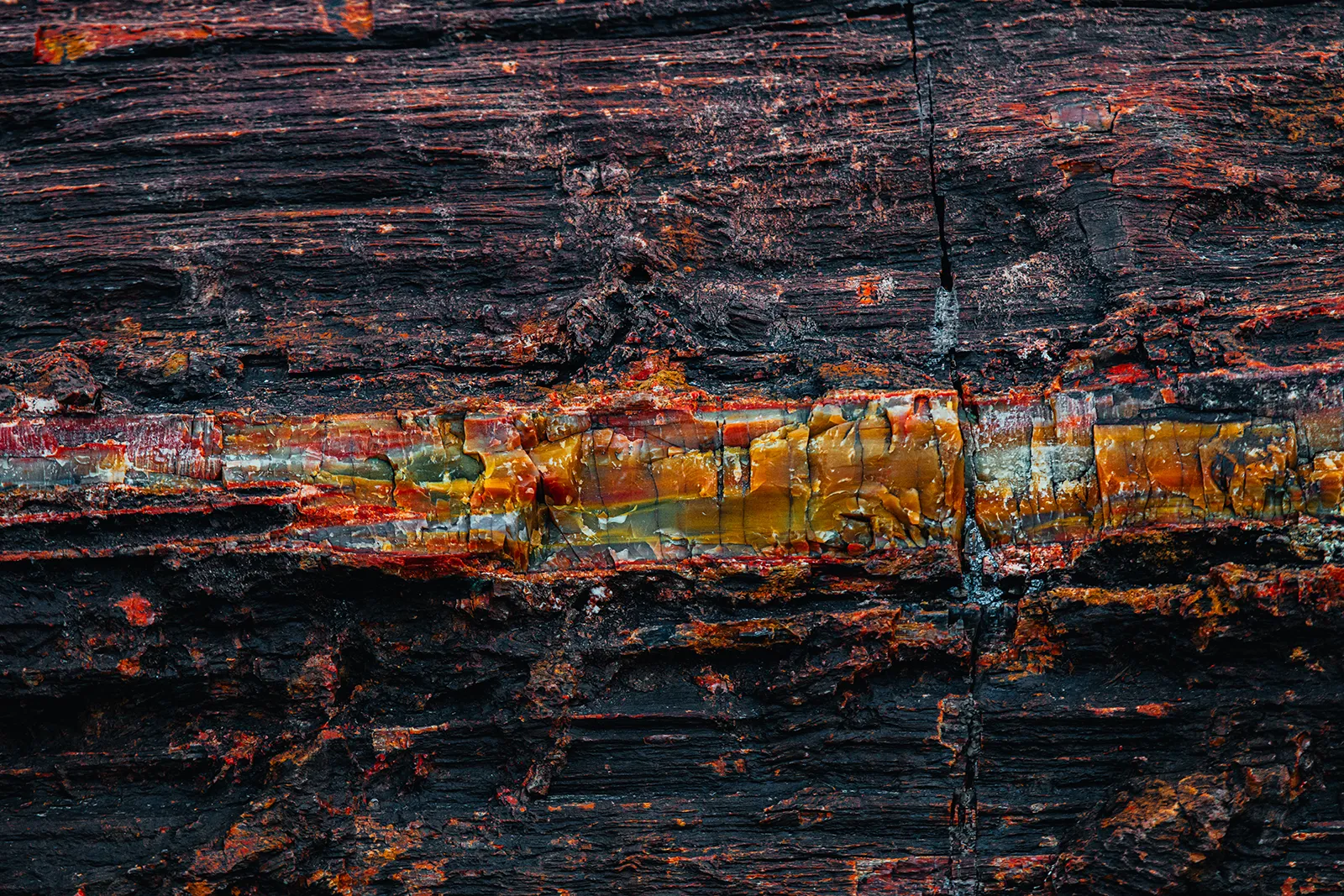
A trip to Petrified Forest National Park promises an unforgettable experience filled with natural wonders, cultural discoveries, and the opportunity to connect with the ancient past. From the vibrant colors of the Painted Desert to the petrified wood that defies time, this park offers a captivating journey through geological marvels and archaeological treasures.
So, pack your sense of adventure, curiosity, and appreciation for the natural world, and embark on a remarkable journey through time at Petrified Forest National Park. Let the stories etched in stone leave a lasting impression on your heart and mind, as you become part of the ongoing legacy of this incredible place.
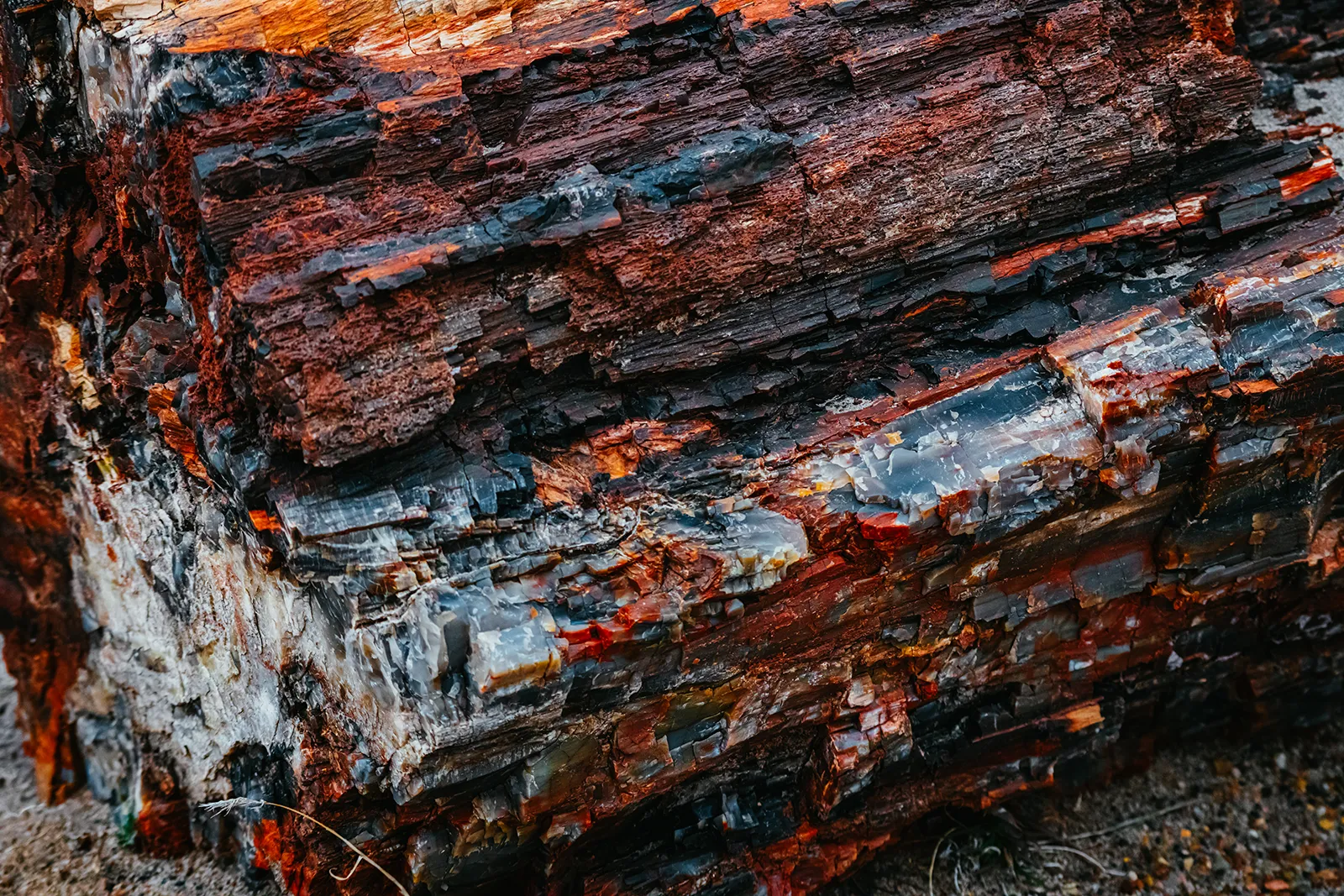
Remember, it’s not just a park; it’s a testament to our shared heritage and a reminder of the importance of preserving our natural and cultural treasures for generations to come. Enjoy your visit and savor every moment of this enchanting destination.
Petrified Forest National Park Trails
Beyond the scenic drives, Petrified Forest National Park offers an array of hiking trails that cater to various interests and fitness levels. These trails allow you to immerse yourself in the park’s wonders, including archaeological sites, natural environments, and, of course, the famous petrified logs.
For those seeking a leisurely stroll or an introduction to the park’s features, the maintained trails are an excellent starting point. These trails highlight different aspects of the park’s unique offerings and are well-suited for families and individuals of all ages.
One popular trail is the Blue Mesa Trail, which descends into a badland area, leading you through stunning blue, purple, and gray bentonite clay formations. As you navigate the trail, you’ll feel as if you’ve stepped onto another planet, with the vibrant colors and otherworldly terrain surrounding you.
If you’re up for a longer hike, the Crystal Forest Trail is a must-visit. This 0.8 mile loop trail takes you through a dense concentration of petrified wood, showcasing the magnificent colors and intricate patterns that make this park so unique. It’s a truly awe-inspiring experience to walk among the ancient logs, each one telling a story of time gone by.
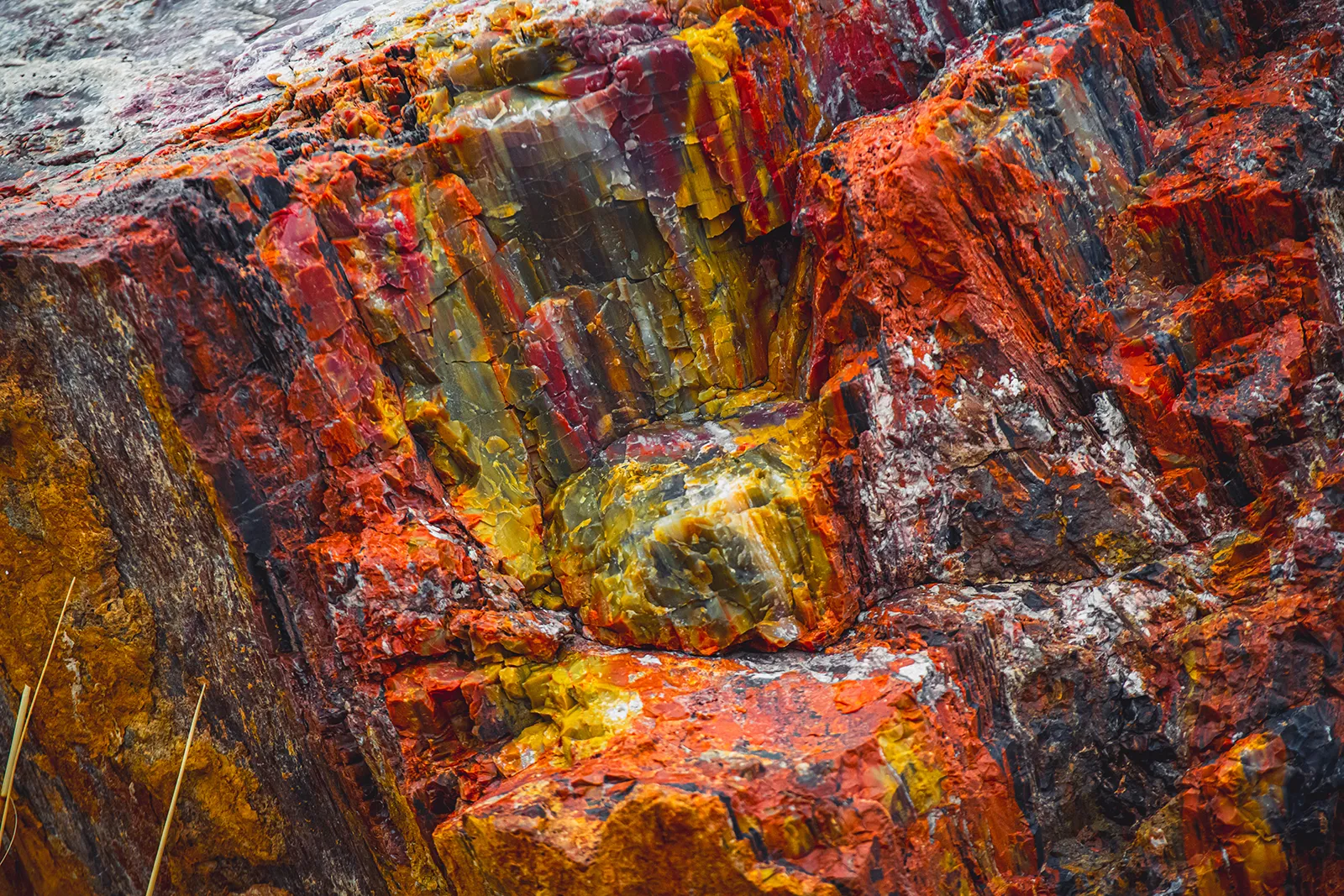
For those who want to delve deeper into the park’s cultural history, the Long Logs and Agate House Trail offers a blend of natural and archaeological wonders. This 2.6 mile loop takes you past the fascinating Long Logs, a collection of massive petrified wood logs, and the reconstructed Agate House, an ancient Puebloan structure made entirely of petrified wood.
If you’re an adventurous hiker looking for a more off-the-beaten-path experience, Petrified Forest also offers “Off the Beaten Path” routes. These routes allow you to explore lesser-known areas of the park and venture off-trail, providing a sense of discovery and solitude.
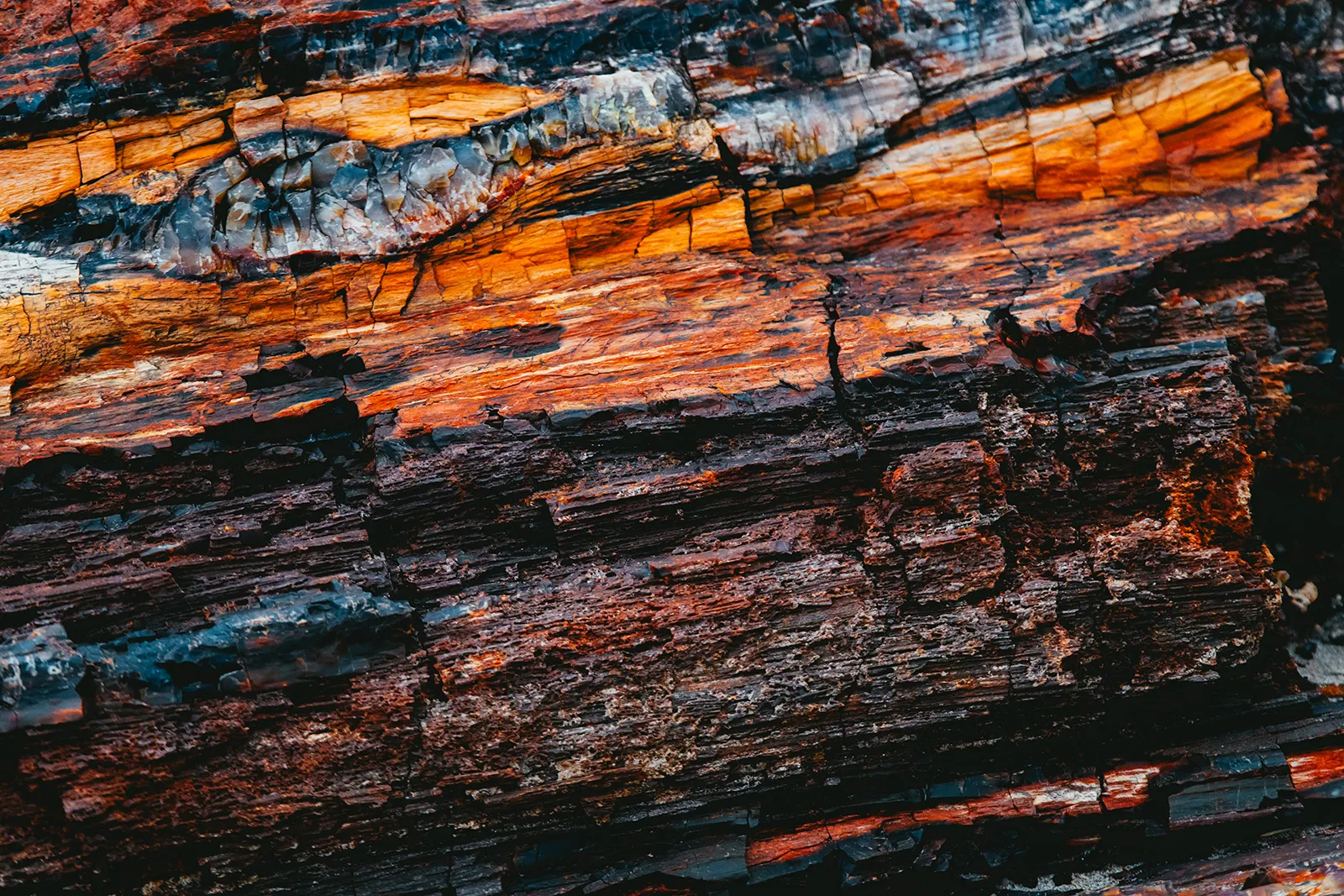
For backpacking enthusiasts and nature lovers seeking a true wilderness experience, the Petrified Forest National Wilderness Area is a must-visit. This designated wilderness area provides an opportunity to hike and camp in a pristine and secluded environment. Imagine enjoying vibrant sunsets, gazing at the awe-inspiring night sky, and waking up to inspiring sunrises. Please note that there is no RV, car, or front country camping in the park. Backpacking and hiking into the designated wilderness area, at least a half-mile from your vehicle, is the only option for overnight stays. Make sure you’re prepared for this adventure by obtaining a free backpacking wilderness permit, available at the visitor centers (Painted Desert Visitor Center or Rainbow Forest Museum) until 4:30 pm.
What’s Nearby Petrified Forest National Park
Petrified Forest National Park is surrounded by several other remarkable national parks and natural wonders, making it an ideal starting point for further exploration of the Southwest’s stunning landscapes. One of the most iconic national parks in the United States, Grand Canyon National Park, is located to the northwest of Petrified Forest. With its awe-inspiring vistas and immense geological history, the Grand Canyon offers visitors an unparalleled experience of natural beauty and wonder. To the south, you’ll find Saguaro National Park, home to the majestic saguaro cactus and a diverse desert ecosystem. The park showcases the unique flora and fauna of the Sonoran Desert, providing opportunities for scenic drives, hiking, and wildlife observation.
Heading east, White Sands National Park in New Mexico awaits, showcasing its otherworldly landscape of shimmering white gypsum sand dunes. This mesmerizing park offers opportunities for sledding down the dunes, hiking, and stargazing. Finally, to the northeast, Mesa Verde National Park preserves the incredible cliff dwellings and archaeological sites of the ancestral Puebloan people. Exploring the ancient dwellings and learning about the rich cultural heritage of Mesa Verde is a truly immersive and enlightening experience. With these nearby locations, visitors to Petrified Forest National Park can embark on an unforgettable journey through diverse landscapes, each with its own unique wonders to discover.
Petrified Forest National Park Parking Information
Petrified Forest National Park provides convenient parking options for visitors to ensure a smooth and enjoyable experience. As you enter the park, you will find designated parking areas available near the various attractions, overlooks, and trailheads. It is important to park or stop only in designated areas and avoid stopping in the middle of the road, ensuring the safety and flow of traffic. Additionally, the park offers parking facilities near the visitor centers, such as the Painted Desert Visitor Center and the Rainbow Forest Museum, where you can plan your visit, gather information, and explore exhibits. If you plan to engage in activities like horseback riding or backpacking, the park provides specific parking areas for trailers and vehicles at designated access points. Remember to be mindful of other visitors and park regulations while parking, and enjoy your time exploring the wonders of Petrified Forest National Park.
Before diving into the wonders that await you, it’s essential to know the park’s operational hours and entrances. Petrified Forest National Park welcomes visitors from 8 am to 5 pm, Mountain Standard Time (MST) (subject to change). It’s important to note that Arizona does not observe Daylight Savings Time, so plan your visit accordingly.
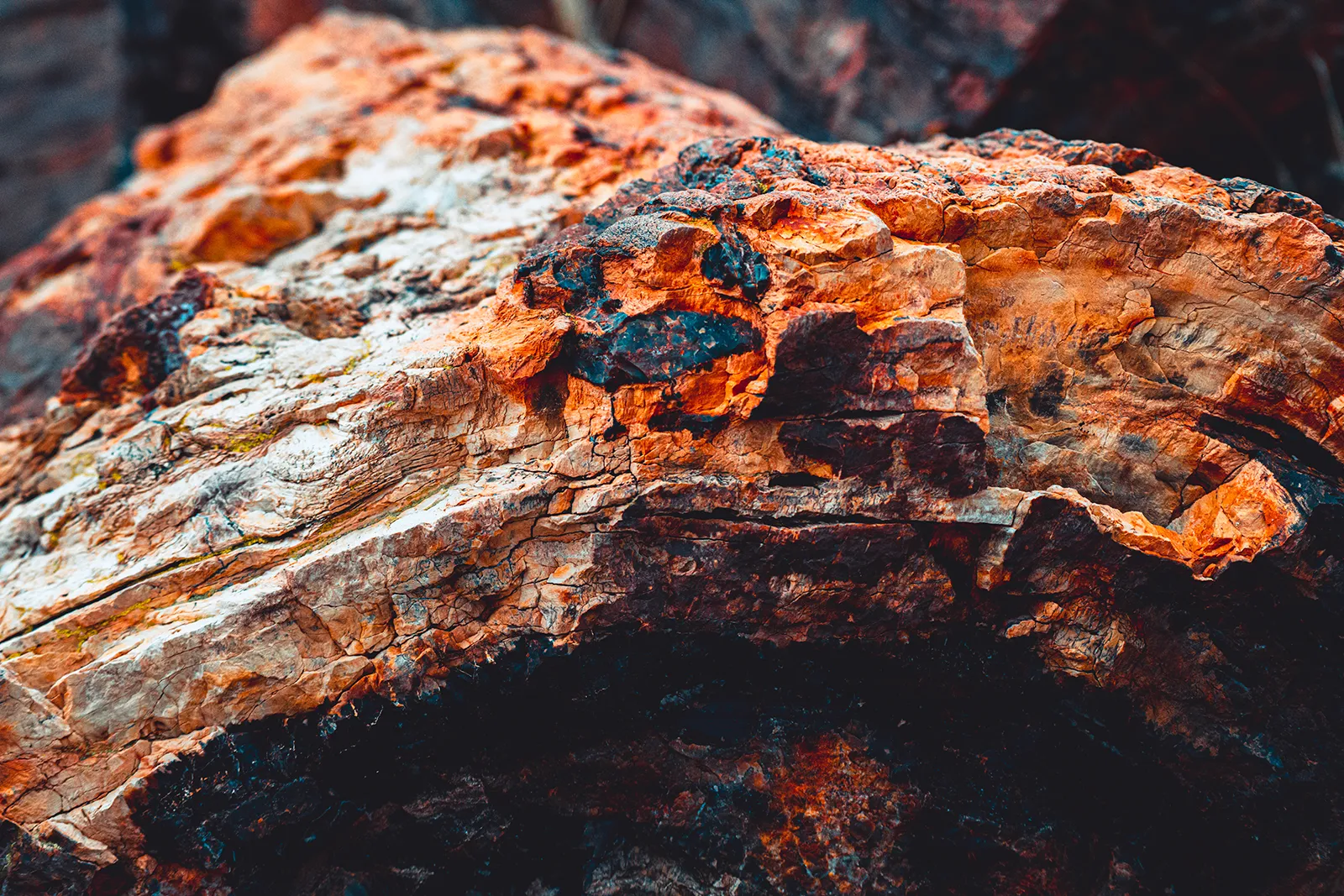
There are two entrances to the park, depending on your direction of travel:
Westbound Interstate 40 travelers should take Exit 311, driving 28 miles through the park to connect with Highway 180 at the south end. From there, you can travel 19 miles on Highway 180 North to return to Interstate 40 via Holbrook.
Eastbound Interstate 40 travelers should take Exit 285 into Holbrook, then travel 19 miles on Highway 180 South to the park’s south entrance. From there, drive 28 miles north through the park to return to Interstate 40.
It’s worth noting that there is no public transportation to or within the park, so private transportation is the most convenient way to explore all that Petrified Forest has to offer.
To access the incredible wonders of Petrified Forest National Park, an admission fee is required. The park offers different types of entrance passes to accommodate various visitors. For private vehicles, the standard entrance pass costs $25. Motorcyclists can enter the park for $20, while individuals on foot or bicycle pay a fee of $15 per person. Commercial vehicles, such as sedans, vans, minibusses, and motor coaches, have varying entrance fees ranging from $35 to $150 depending on their seating capacity. It’s worth noting that the park honors the Petrified Forest National Park Annual Pass and the America the Beautiful Annual Pass, as well as the Senior Pass, Access Pass, and Volunteer Pass in lieu of the entrance fee. These passes provide excellent value for frequent visitors or those exploring multiple national parks. So, gather your adventure gear, plan your visit, and embark on an unforgettable journey through the petrified wonders of the park (all fees subject to change).



